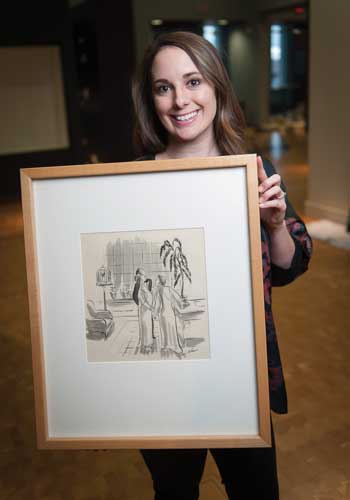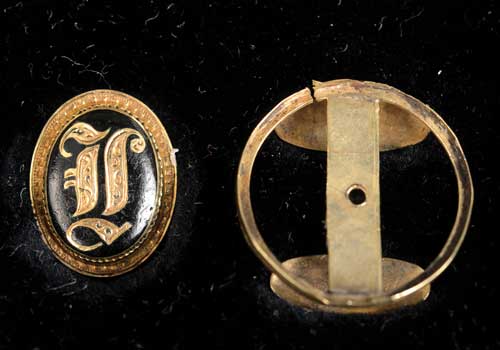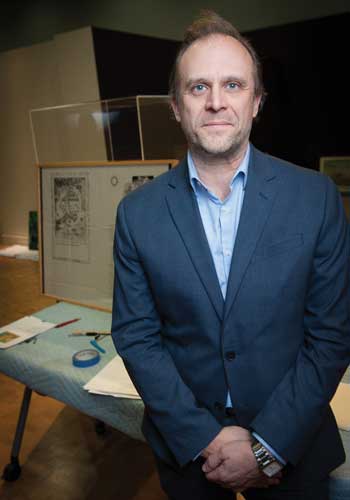The Peoria Riverfront Museum celebrates the Illinois Bicentennial with its largest exhibit yet.
Pause for a moment and think about the turning points in Illinois history. As we celebrate our state’s 200th birthday in 2018, what were the pivotal events… and who were the key players?
Now dial that mental telescope out to the larger picture of Illinois’ role in our nation’s history, and then focus in on the vital role the people of the Peoria area have played in our state’s story. If you agree that historical artifacts are like the portkeys from Harry Potter, instantly transporting you to a different place, the new exhibit at the Peoria Riverfront Museum is not to be missed. If every artifact tells a story, visitors will be able to explore more than 230 chapters of our state’s illuminating history through Celebrate Illinois: 200 Years in the Land of Lincoln.
“This is the first comprehensive museum exhibit on our state’s bicentennial—and the largest locally-curated exhibit in Peoria history,” declares museum president and CEO John Morris. He adds that the spark came from Abraham Lincoln himself—or at least the 19-ton, 31-foot tall painted bronze sculpture known as “Return Visit” by artist Seward Johnson. When the colossal statue was installed outside of the museum last fall, the conversation about the bicentennial exhibit really caught fire. What would Lincoln say today?
 Artifacts on Loan
Artifacts on Loan
As the museum’s assistant curator of history, Lottie Phillips took the lead role in putting this massive exhibit together. “The conceptualized ideas for future exhibits are usually discussed two or three years out,” she explains. “We began working on this exhibit a year ago. What kicked it off was a meeting with the Illinois State Museum. We began brainstorming what a bicentennial exhibit would look like.” And what an exhibit it became!
“The loan process is the largest part,” she notes. “In May 2017, we sent out the first loan request to the Smithsonian Institution,” contacting both the National Museum of American History and the American Art Museum in Washington, DC for a number of desired artifacts. The Peoria Riverfront Museum is an affiliate partner with the Smithsonian Institution, which makes it easier to get such loans.
Next, “we began identifying where else we might borrow objects,” Phillips continues. In all, more than 230 artifacts from Illinois history will be on display, including objects from their own collection, from private collections, and from both the nation’s largest museums and smaller institutions throughout the state: the Lincoln Home National Historic Site, Abraham Lincoln Presidential Library and Museum, Illinois State Museum, Knox College Archives and the Galesburg Colony Underground Railroad Freedom Station among them.
On loan from the General John A. Logan Museum in Murphysboro is a lithograph of the museum’s namesake and an original political cartoon from Puck, a popular humor magazine (1871-1918) that satirized the issues of the day. Logan was a U.S. Senator, vice-presidential candidate, President Grant’s favorite Civil War general and the founder of Memorial Day. Along with Grant and Lincoln, he is one of three individuals mentioned by name in our state anthem.
From the Galena Historical Society come two of Phillips’ favorite artifacts: Grant’s military belt buckle and a first edition of his highly regarded memoirs. “Writing the signage for these artifacts gives you another layer of appreciation for the breadth of Illinois history.
“The Lincoln items are my personal favorites,” she adds matter-of-factly. Not only will visitors see the actual desk upon which our 16th president wrote the Emancipation Proclamation, a cuff link that he was wearing at the time of his death will also be on display. As Phillips continues, she grows animated—her passion evident while talking about the personal effects from a lesser-known friend of Lincoln’s named Gustave Koerner.
A German immigrant from Belleville, Illinois, Koerner helped Lincoln create the Republican Party. He was appointed ambassador to Spain in an effort to keep that country out of the Civil War, and he was one of Lincoln’s pallbearers at his funeral in Springfield. From the St. Clair County Historical Society, the museum borrowed Koerner’s 1832 diploma from the University of Heidelberg, a fencing saber circa 1830, and a cabinet card photograph of Koerner from his ambassador days.
There are many different angles on how to interpret history, Phillips notes, but sometimes it is the lesser-known stories that humanize the face of our nation.

Above, the cufflinks worn by Abraham Lincoln on the night of his assassination. The face features a gold gothic “L” set in black enamel and surrounded by a gold frame. Dr. Charles Sabin Taft, a family friend, removed it from his shirt sleeve while searching for Lincoln’s wound. Photo courtesy of the Abraham Lincoln Presidential Library and Museum
Powerful Stories to Tell
The exhibit encompasses more than the last two centuries of statehood, with a number of pre-Colombian American Indian artifacts on display. It explores an integrated series of themes, including agricultural history with one of John Deere’s first plows; literary history with autographed first editions from Carl Sandburg, Edgar Lee Masters and Betty Friedan; industrial history with Robert Avery’s hand-carved spoon from Andersonville Prison, where he designed farm equipment as a prisoner of war; and of course, Benjamin Holt’s early Caterpillar tractors.
 Bill Conger, curator of collections and exhibitions, notes one of his favorite works in the exhibit: a painting by Manierre Dawson, on loan from the Illinois State Museum. “Dawson was an engineer and architect who arguably may have painted the first abstract paintings in America,” he explains.
Bill Conger, curator of collections and exhibitions, notes one of his favorite works in the exhibit: a painting by Manierre Dawson, on loan from the Illinois State Museum. “Dawson was an engineer and architect who arguably may have painted the first abstract paintings in America,” he explains.
Conger is also enthused about “Ludwig Mies van der Rohe, [who] is represented in this exhibit with a chair that is part of our collection.” Mies was an innovative designer and architect—one of the pioneers of modernist architecture—who fled Nazi Germany to head the architectural school at the Illinois Institute of Technology in Chicago. “It quickly became apparent the number of groundbreaking individuals who lived and worked in this state, from chemists to musicians, artists to athletes, politicians to authors,” he adds.
“The list of incredible people who have lived in Illinois seems endless,” Phillips agrees. She hopes the exhibit “will raise interest and pride in our state history.”
Celebrate Illinois was curated with the concept that every object tells a story, that each work of art or artifact represents a person, and that each person has a powerful story to tell, offering distinctly human insights. It explores the lives of famous (and infamous) inventors, abolitionists, artists, celebrities and entrepreneurs—plus all four U.S. presidents with a direct connection to our 200-year-old state. Illinois is truly and forever the Land of Lincoln… but it’s so much more than that as well. a&s
Brian "Fox" Ellis is an internationally acclaimed author, storyteller, historian and naturalist. Celebrate Illinois: 200 Years in the Land of Lincoln runs at the Peoria Riverfront Museum through June 3, 2018. See more photos from the Celebrate Illinois exhibition!


